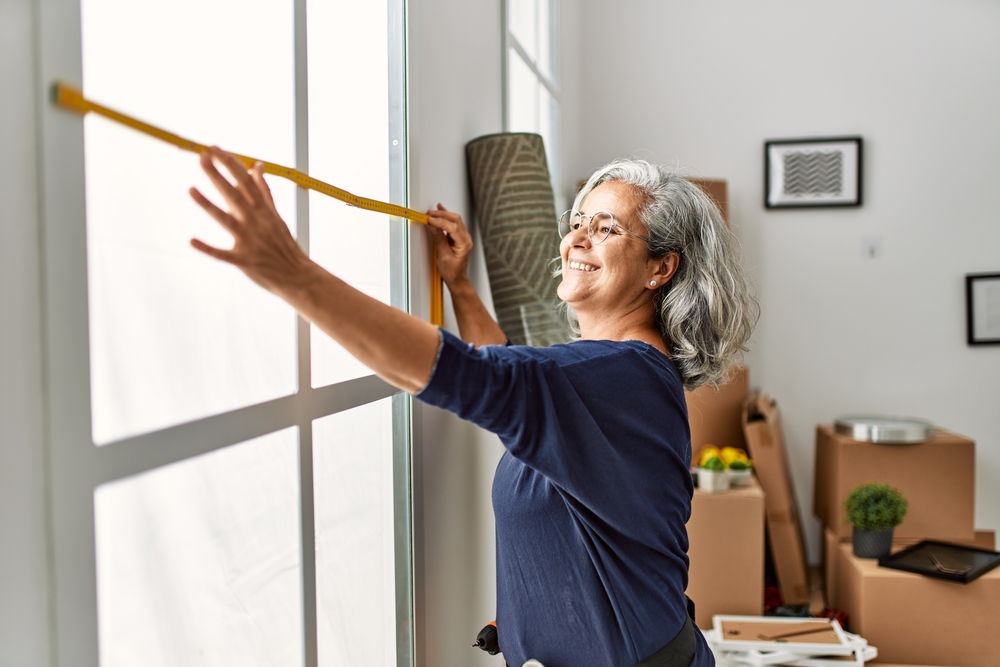In an era of high interest rates, you might feel that buying a home is out of reach.
Good news: A buydown mortgage could be the key to lower payments.
This article explores how reducing your interest rate upfront can save you money and make homeownership more accessible.
Keep reading to learn if this option fits your needs and can accelerate your journey to homeownership.
Key Takeaways
- A buydown mortgage helps lower your interest rates upfront, making monthly payments smaller especially in the first few years. This means you save money and can afford a home easier.
- With a buydown mortgage, you pay additional fees when closing on your house which goes towards reducing your loan’s interest rate for a set period or possibly for its entire duration. This could mean paying less overall interest and potentially qualifying for a bigger loan.
- Opting for this type of mortgage may lead to significant savings over time because you’re effectively lowering the amount of interest you have to pay back. It also opens up the possibility of owning more expensive homes due to higher qualification amounts.
- However, buydown mortgages come with their own set of challenges like higher upfront costs and rising payments over time. These factors make it crucial to consider your long-term financial situation before choosing this option.
- Deciding on a buydown mortgage is smart if you plan on staying in your home for many years and expect your income to increase, helping handle potential future payment rises comfortably. Consulting with a financial advisor or mortgage specialist can help determine if it aligns with your homeownership goals.
What is a buydown mortgage?
A buydown mortgage offers an innovative way for you to lower your interest rates on a home loan, making it easier to manage payments especially in the early years.
This special arrangement involves paying extra fees upfront when closing on your house. These fees go towards reducing the interest rate of your mortgage for a certain period or possibly for the entire duration of the loan.
In practice, this means you can enjoy smaller monthly payments at the beginning of your mortgage term. Lenders or sometimes even home sellers offer this option as an incentive. The reduced rate period varies; it could last just a few years or extend over the life of the loan.
Opting for a buydown can provide significant savings and make homeownership more accessible right from start.
What are the benefits of a buydown mortgage?
A buydown mortgage enables you to reduce your upfront payments and overall interest, potentially allowing for a larger mortgage while also opening the door to tax benefits.
Smaller upfront payments
Opting for a buydown mortgage can make the dream of owning a home more attainable by requiring you to pay less money upfront. This means you don’t have to save as much before buying your house.
A lower initial payment eases the financial strain, making it easier for you to manage your budget and other expenses. It opens up possibilities for prospective homebuyers who might have thought homeownership was out of their reach due to high starting costs.
By choosing this mortgage option, you can allocate funds toward furnishing your new home or saving for future needs instead of tying up all your resources in the down payment and closing costs.
This approach not only supports your immediate financial health but also provides flexibility in managing your finances over time without overwhelming stress from hefty initial payments.
Less interest
With a buydown mortgage, you pay less interest over the loan’s lifetime. This happens because you or the seller pay part of the interest upfront, which lowers your future yearly rates.
Imagine saving thousands in interest costs, making each dollar stretch further in your budget.
You enjoy more manageable monthly payments, especially in the early years of your loan. These savings can be significant, allowing you to allocate funds elsewhere like home improvements or investments.
Every payment becomes more effective as more goes towards reducing the principal balance rather than covering interest charges.
May qualify for a larger mortgage
By opting for a buydown mortgage, you may find that you qualify for a larger mortgage. This can open up opportunities for purchasing a home with more space or in a more desirable location.
With the potential to secure a larger loan amount, you can aim for the home of your dreams and attain greater flexibility when making your housing decisions.
Potential tax benefits
By qualifying for a larger mortgage, you may also be eligible for potential tax benefits. This could mean receiving deductions on your taxes, leading to significant savings over the life of your loan.
Keep in mind that tax laws are subject to change and it’s recommended to consult with a tax professional to understand how these benefits apply to your specific situation.
What are the challenges of buydown mortgages?
Buydown mortgages present challenges such as increasing payments over time and requiring a larger upfront payment. Additionally, they may include higher closing costs and the risk of potential default down the line.
Payments increase over time
As time goes on, your mortgage payments will gradually rise. For example, in a 3-2-1 buydown, the buyer pays less for the first three years of the loan, but the interest rate increases 1% each year.
Larger upfront payment
A buydown mortgage requires a larger upfront payment, which can be challenging for some buyers. This payment is made to reduce the interest rate and lower monthly payments in the early years of the loan.
It’s essential to consider your financial situation before committing to this type of mortgage, as it may impact your ability to cover other home-related costs.
Higher closing costs
Higher closing costs are a potential downside of a buydown mortgage. These costs include fees for loan origination, appraisals, title insurance, and more. With a buydown mortgage, these expenses can be higher than with traditional loans because you may need to pay additional upfront points to lower your interest rate initially.
This means that while the long-term savings may be significant, you should carefully consider whether the higher closing costs align with your financial situation and long-term homeownership goals before committing to a buydown mortgage.
You could default down the line
Defaulting down the line is a risk to consider with buydown mortgages. Should your financial situation change, and if you are unable to manage the increased payments later on, there’s a chance of defaulting.
As such, it’s important to carefully weigh this possibility before committing.
When does it make sense to use a buydown mortgage?
Using a buydown mortgage makes sense if you plan to stay in your home for an extended period. It can be advantageous if you expect your income to increase, making higher monthly mortgage payments more manageable in the future.
Additionally, a buydown mortgage could be beneficial if interest rates are expected to rise, as it allows you to secure lower rates at the beginning of the loan. This type of mortgage may also suit individuals who have significant funds available upfront and want to reduce their monthly payments initially.
By considering these factors and consulting with a financial advisor or mortgage specialist, you can determine whether a buydown mortgage aligns with your long-term homeownership goals.
Is a buydown mortgage right for you?
A buydown mortgage might be suitable for you if you plan to stay in your home long-term and want to reduce your initial payments. It could also work well if you expect a sizable increase in income in the near future, allowing you to make larger payments later on.
Keep in mind that being able to afford the higher payments as they start increasing is crucial. If this aligns with your financial plans, then a buydown mortgage may be an option worth considering.
Consider consulting with a qualified mortgage advisor who can help evaluate your specific financial situation. They can provide tailored advice based on your circumstances and help determine whether a buydown mortgage aligns with your long-term homeownership goals.
Buydown mortgages: FAQs
1. What is a buydown mortgage?
A buydown mortgage is a loan where you pay extra fees upfront to lower your interest rate for a few years or the life of the loan.
2. How does a buydown mortgage reduce my interest rates?
By paying more money at the start, you get a lower interest rate which reduces your monthly payments for some time.
3. Who can benefit from a buydown mortgage?
Anyone looking to save on interest costs and have lower initial monthly payments might find a buydown mortgage beneficial.
4. Are there different types of buydown mortgages?
Yes, there are temporary and permanent buydowns depending on whether the reduced rate applies for part or all of the loan’s term.
5. Can I get out of a buydown agreement if I change my mind?
Getting out of a buydown agreement usually isn’t possible without refinancing into another loan type or paying off your current mortgage.
Choosing how to finance your home is one of the biggest decisions you’ll ever make. Rather than going it on your own, you’re best off partnering with a qualified mortgage expert who can help you explore your options.
Disclaimer:
The content provided on this website is offered for educational purposes only. While we endeavor to provide accurate and up-to-date information, we make no representations or warranties of any kind, express or implied, about the completeness, accuracy, reliability, suitability, or availability of the content for any purpose. Visitors are advised to consult with qualified experts before making any financial decisions or taking any actions based on the information provided on this website.












